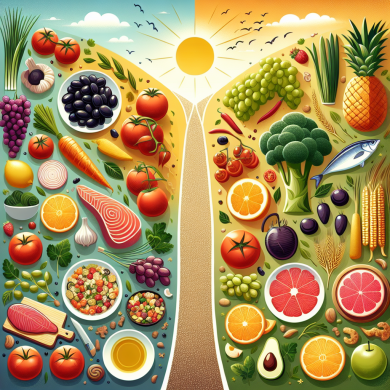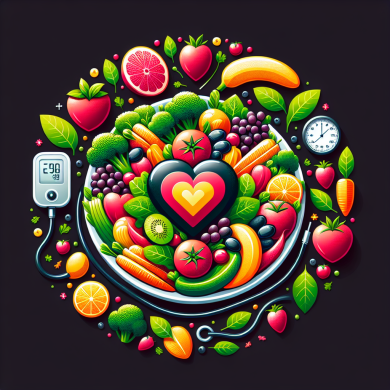Top Protein Sources for the DASH Diet
Introduction to the DASH Diet
The Dietary Approaches to Stop Hypertension (DASH) diet is a well-researched nutritional plan aimed at reducing blood pressure and promoting heart health. It emphasizes the consumption of high-quality, nutrient-dense foods and encourages a balanced intake of macronutrients. While the DASH diet is rich in fruits, vegetables, whole grains, and low-fat dairy, protein sources are also essential components that help maintain muscle mass, support metabolic functions, and enhance overall health.
Importance of Protein in the DASH Diet
Protein plays a crucial role in the body by supporting cell growth, repairing tissues, and producing enzymes and hormones. Within the framework of the DASH diet, protein helps keep you satiated, reduces overall calorie intake, and aids in weight management. However, it is vital to choose lean and heart-healthy protein sources to align with the diet’s goals of reducing blood pressure and improving cardiovascular health.
Top Protein Sources for the DASH Diet
Poultry
Poultry, particularly chicken and turkey, are excellent protein sources that fit well within the DASH diet. Opt for skinless, boneless cuts to reduce saturated fat intake. Poultry is versatile and can be grilled, baked, or poached, making it easy to incorporate into various meals. It is also rich in essential nutrients like B vitamins, which support energy metabolism.
Fish and Seafood
Fish and seafood are outstanding protein sources that provide the added benefit of omega-3 fatty acids, which are known for their heart-protective properties. Fatty fish, such as salmon, mackerel, sardines, and trout, are particularly beneficial. They help reduce inflammation, lower triglyceride levels, and improve overall cardiovascular health. Aim to include fish in your diet at least twice a week for optimal benefits.
Legumes
Legumes, including beans, lentils, and peas, are plant-based proteins that are rich in fiber, vitamins, and minerals. They are low in fat and free from cholesterol, making them ideal for heart health. Legumes can be used in a variety of dishes such as soups, stews, salads, and casseroles. Their high fiber content also aids in digestion and helps maintain stable blood sugar levels.
Nuts and Seeds
Nuts and seeds are nutrient-dense foods that provide protein, healthy fats, and fiber. They are also excellent sources of vitamins and minerals such as vitamin E, magnesium, and selenium. Almonds, walnuts, chia seeds, and flaxseeds are particularly beneficial for heart health. While they are calorie-dense, consuming them in moderation can contribute to satiety and weight management.
Eggs
Eggs are a versatile and highly nutritious protein source. They contain all nine essential amino acids required by the body and are rich in vitamins and minerals such as vitamin D, B vitamins, and choline. While eggs do contain cholesterol, recent research suggests that they do not significantly impact blood cholesterol levels in most people. Including eggs in moderation can be part of a heart-healthy diet.
Low-Fat Dairy
Low-fat dairy products, such as yogurt, milk, and cheese, are excellent sources of protein and calcium. They support bone health and provide other essential nutrients like potassium and vitamin D. Opt for low-fat or fat-free options to keep saturated fat intake in check. Greek yogurt, in particular, is a great choice due to its higher protein content and probiotic benefits.
Tofu and Tempeh
Tofu and tempeh are plant-based protein sources made from soybeans. They are particularly beneficial for vegetarians and vegans following the DASH diet. Tofu is versatile and can be used in a variety of dishes, while tempeh has a firmer texture and is rich in probiotics. Both are excellent sources of protein, iron, and calcium and can help reduce cholesterol levels.
Incorporating Protein into Your DASH Diet Meal Plan
Breakfast
Start your day with a protein-rich breakfast to keep you full and energized. Consider options like Greek yogurt with a sprinkle of nuts and berries, an omelet with vegetables, or a smoothie with protein-rich ingredients like tofu or almond butter.
Lunch
For lunch, opt for salads topped with grilled chicken or fish, lentil soup, or a quinoa and black bean salad. These meals provide a balance of protein, fiber, and essential nutrients.
Dinner
Dinner can include grilled fish with steamed vegetables, a stir-fry with tofu and colorful vegetables, or a hearty bean chili. Incorporate a variety of protein sources throughout the week to ensure a diverse intake of nutrients.
Snacks
Healthy snacking options include a handful of almonds or walnuts, carrot sticks with hummus, or a small bowl of cottage cheese with fruit. These snacks provide protein and essential nutrients without excessive calories.
Conclusion
Incorporating a variety of protein sources into the DASH diet is essential for maintaining muscle mass, supporting metabolic functions, and enhancing overall health. By choosing lean and heart-healthy protein options, you can align with the diet’s goals of reducing blood pressure and improving cardiovascular health. Whether you prefer animal-based or plant-based proteins, the DASH diet offers flexibility and encourages a balanced intake of nutrients. By making mindful choices and diversifying your protein sources, you can enjoy a delicious and heart-healthy diet that supports your well-being.















Add comment